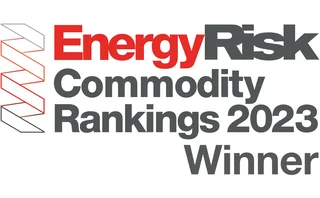
UBS precious metals team shines amid market turmoil


Global uncertainty always adds allure to precious metals, putting a premium on the long-standing relationships and cutting-edge technology of the UBS precious metals team
While 2022 brought widespread turmoil to financial and commodities markets, it was a banner year for gold. Russia’s February 2022 invasion of Ukraine saw investors flood into the metal, which came close to historic highs. Since then, ongoing inflationary concerns have created demand. Central bank buying also emerged as the highlight of the second half of last year. And, as concerns around the banking sector build towards the end of the first quarter of 2023, its appeal looks set to continue.

In this environment, “gold is ripe to be the beneficiary asset class”, notes Christine Gilfillan, head of precious metals sales Americas, at UBS. “It can wear many hats – whether it’s for diversification, inflation, geopolitical tension or the lifeboat to the rumblings in equity markets.”
She notes it is also well positioned as an alternative to the US dollar: “There are many aspects that may be supportive for a positive gold environment in 2023.”
The precious metals markets behaved exactly as one might have expected when war broke out in Ukraine. Investors shifted into gold, sending the price from $1,750 per ounce (/oz) in November 2021 to a March peak of $2,070/oz, near the all-time high. Inflationary pressures led to a historic round of central bank tightening and, as global rates increased, the opportunity cost of holding gold compared with other asset classes became a theme. As a result, the price pulled back to a low of $1,616/oz in November 2022.
However, diversification by central banks provided the ammunition to close 2022 unchanged at $1,800/oz. The World Gold Council (WGC) reported “colossal central bank purchases”, helping to lift demand to an 11-year high. The official sector allocated strongly to gold towards the end of the year, says Andrew Matthews, global head of precious metals distribution at UBS, while physical demand, particularly from China and India, also rebounded in Q3. These factors conspired to set a record annual average gold price of $1,800/oz for 2022, according to the WGC.
The silver market followed a similar pattern – a run-up in the first few months of 2022 was followed by declining prices until the last quarter. “Silver tends to take its direction from gold,” states Gilfillan. However, she noted exceptional physical and retail demand for the metal adding that, during inflationary times, “investors saw it as an affordable source of value”.
Within the platinum group metals, palladium responded to sanctions on Russia – which accounts for 40% of global supply – by spiking dramatically and trading to an all-time high of $3,450/oz. But, since October 2022, there has been a steady decline as the market digests the accelerating displacement by electric vehicles of internal combustion engines, which use palladium in catalytic converters. This development is clouding the medium-term demand outlook, notes Gilfillan.
Meanwhile, platinum’s rally to just shy of $1,200/oz also showed its vulnerability to supply risk, she says. This escalated when South Africa’s miners fell victim to load-shedding by Eskom, South Africa’s troubled state-owned power utility.
Institutional demand

UBS positioned its client base well to benefit from the strong interest in precious metals in 2022, something that is reflected in the bank’s stand-out performance in Energy Risk’s 2023 Commodity Rankings. UBS was voted the top dealer in gold, silver, and platinum and palladium, and ranked as the Overall best precious metals dealer, repeating its success of the previous year.
Matthews attributes this success to both derivatives and physical activity. “As demand returned from wealth management clients and discretionary investors, our derivatives platform emerged as a key strength during the rally in March,” he says. “Meanwhile, as the gold price pared off, our physical activity stepped up considerably.”
At that point, the bank’s long-standing relationships with refiners came into its own. “Within the physical business, we pride ourselves on the integrated service we offer from the front-office sales and trading to operations, logistics and vaulting,” Matthews says. “It’s not just what you see on the surface – it’s about the whole chain-of-service offering.”
Tapping into technology
UBS has continued to invest in its trading technology, including the UBS Neo T-Pricer platform. Built on the proprietary UBS Neo platform, T-Pricer’s functionalities include structuring, pricing and trading foreign exchange and precious metals options. In addition, Matthews points to the introduction of natural language processing – smart entry – which speeds up the pricing of derivatives pricing requests by processing requests made in natural language.
Moreover, the bank is in the process of going live with multiple differentiating features. These include historic options strategy backtesting, which it is in the process of rolling out to clients, and an event risk function. The latter shows the impact of historic and upcoming events – such as interest rate rises or the publication of economic data – to enable users to see the potential effects of events on their portfolios or trades.
Last year, UBS also began offering its precious metals clients access to the FX Algorithmic Execution suite, its automated trading system. Gilfillan says: “It’s been quite a success, with investors across multiple sectors using it to access liquidity across numerous venues”. As well as providing users with full control over price limits and the speed and timing of execution, its post-trade analytics can demonstrate to the client the value generated by the algorithm execution. “We’re one of the few banks that provides this offering in precious metals,” she adds.
“New technology, coupled with one of the most experienced teams in the marketplace, from front to back, enhances the client experience,” says Matthews.
“We’re a team of specialists, rather than generalists,” adds Gilfillan. “That separates us from some of our peers. We understand the market dynamics, the turbulence and how best to serve our customers under any market environment – we’ve lived with higher interest rates in the past, and we know how to work within that landscape.”
“That extends into the bullion market,” Matthews adds. “We have long-term partnerships across the whole value chain, from the miners to the consumers.”
There are also synergies to be had within the bank. The unification of UBS’s Global Markets business in 2020 has allowed for collaboration with colleagues serving different markets. “Working with the equities business has broadened our client base beyond the traditional precious metals users. Macro and equity investors also have first-hand access to the platform,” he says.
An eye on sustainability
Matthews notes that the bank is responding to client demands around sustainability. Last year, in partnership with the Swiss Better Gold Association, the bank launched a sustainably sourced physical gold product. It offers gold produced from artisanal and small-scale mines, with a price premium that is invested back into mining communities.
The product appeals to corporate clients that want to demonstrate to their own clients the traceability of the gold they use, and that it is delivering positive social and environmental impact. Matthews acknowledges that sustainably produced gold represents a small part of its overall physical business, but is “one that continues to grow and helps differentiate our offering”.
Looking ahead
Matthews expects demand from the official sector – central banks and sovereign wealth funds – to continue in 2023, but probably not at the same level as in 2022. Meanwhile, macro factors are likely to be supportive of a high gold price as policy-makers reconsider how aggressively they plan to raise interest rates to tackle inflation, he notes. “That is conducive to a high gold price.”
“We still feel that the market is underinvested,” Matthews adds. “We expect clients will continue to gain exposure to gold, given the current macro environment and as a store of wealth.”
Find out more about UBS precious metals
See the full Energy Risk Commodity Rankings 2023 results
Sponsored content
Copyright Infopro Digital Limited. All rights reserved.
You may share this content using our article tools. Printing this content is for the sole use of the Authorised User (named subscriber), as outlined in our terms and conditions - https://www.infopro-insight.com/terms-conditions/insight-subscriptions/
If you would like to purchase additional rights please email info@risk.net
Copyright Infopro Digital Limited. All rights reserved.
You may share this content using our article tools. Copying this content is for the sole use of the Authorised User (named subscriber), as outlined in our terms and conditions - https://www.infopro-insight.com/terms-conditions/insight-subscriptions/
If you would like to purchase additional rights please email info@risk.net